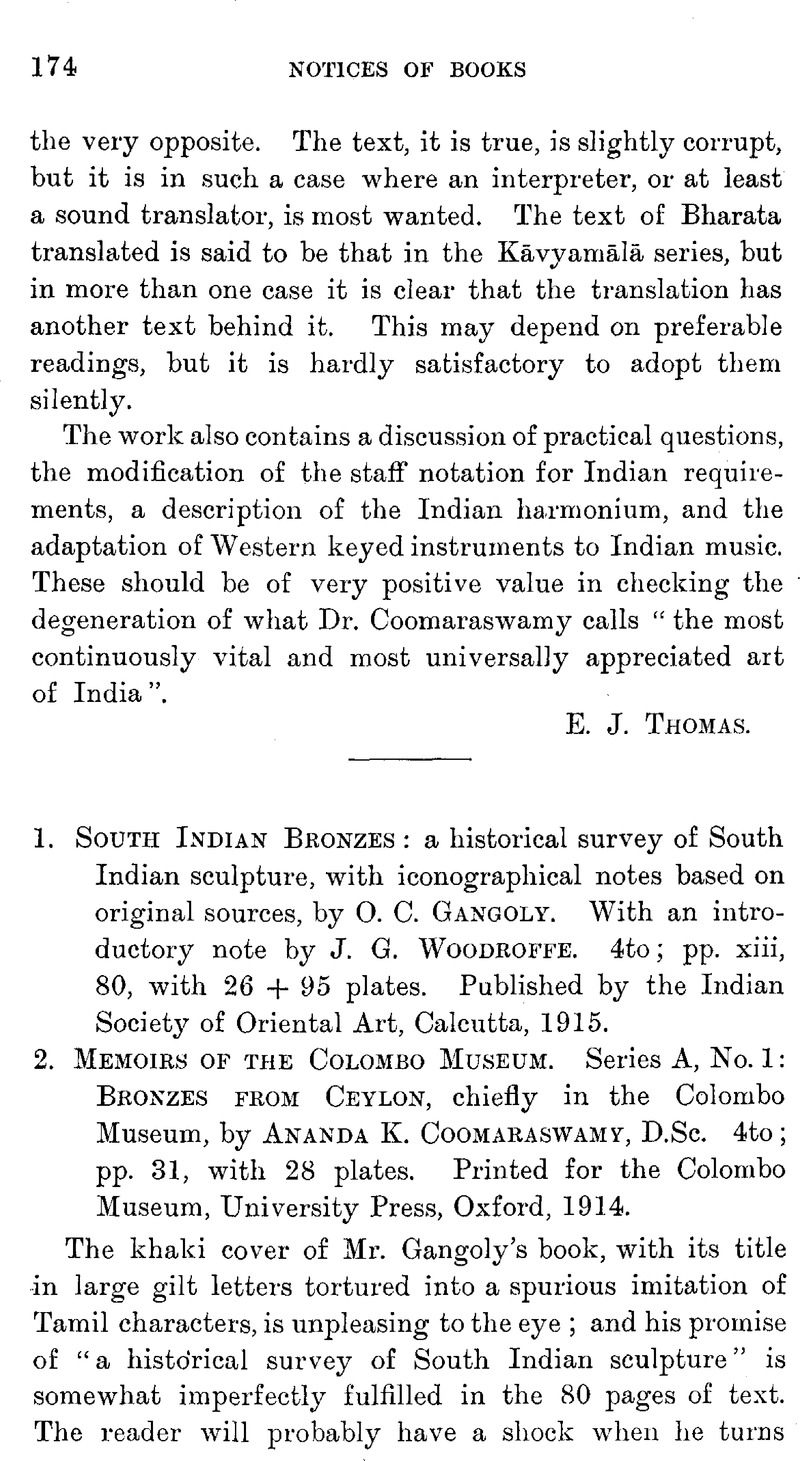No CrossRef data available.
Article contents
1.South Indian Bronzes: a historical survey of South Indian sculpture, with iconographical notes based on original sources, by O. C. Gangoly. With an introductory note by J. G. Woodroffe. 4to; pp. xiii, 80, with 26 + 95 plates. Published by the Indian Society of Oriental Art, Calcutta, 1915. - 2.Memoirs of the Colombo Museum. Series A, No. 1: Bronzes From Ceylon, chiefly in the Colombo Museum, by Ananda K. Coomaraswamy, D.Sc. 4to; pp. 31, with 28 plates. Printed for the Colombo Museum, University Press, Oxford, 1914.
Published online by Cambridge University Press: 15 March 2011
Abstract

- Type
- Notices of Books
- Information
- Copyright
- Copyright © The Royal Asiatic Society 1916
References
page 175 note 1 We may mention as examples the following monstrosities of transliteration: Deb jāni and Balliramayee (p. 10)Google Scholar, Raj Raj (p. 12)Google Scholar, Narshinha Varmana (p. 13)Google Scholar, Vabishyottara purāna (p. 26)Google Scholar, Chillapp-āti-Kāram (p. 56)Google Scholar. So reckless is Mr. Gangoly in his passion for the vernacular Bengali pronunciation that he even ascribes it to other writers innocent of it: thus he quotes the paper “Artha-pañcaka” in this Journal (1910, p. 576) as “Aratha Pancak”.
page 176 note 1 For example, the date ascribed by him to Māṇikkavāchakar is quite wrong: it is now demonstrable that he flourished between 800 and 1000 a.d.
page 176 note 2 The Vaishṇava schools are scarcely mentioned, and there is not a word said about such typical developments as e.g. the sculpture of the Hoysaḷa artists.




